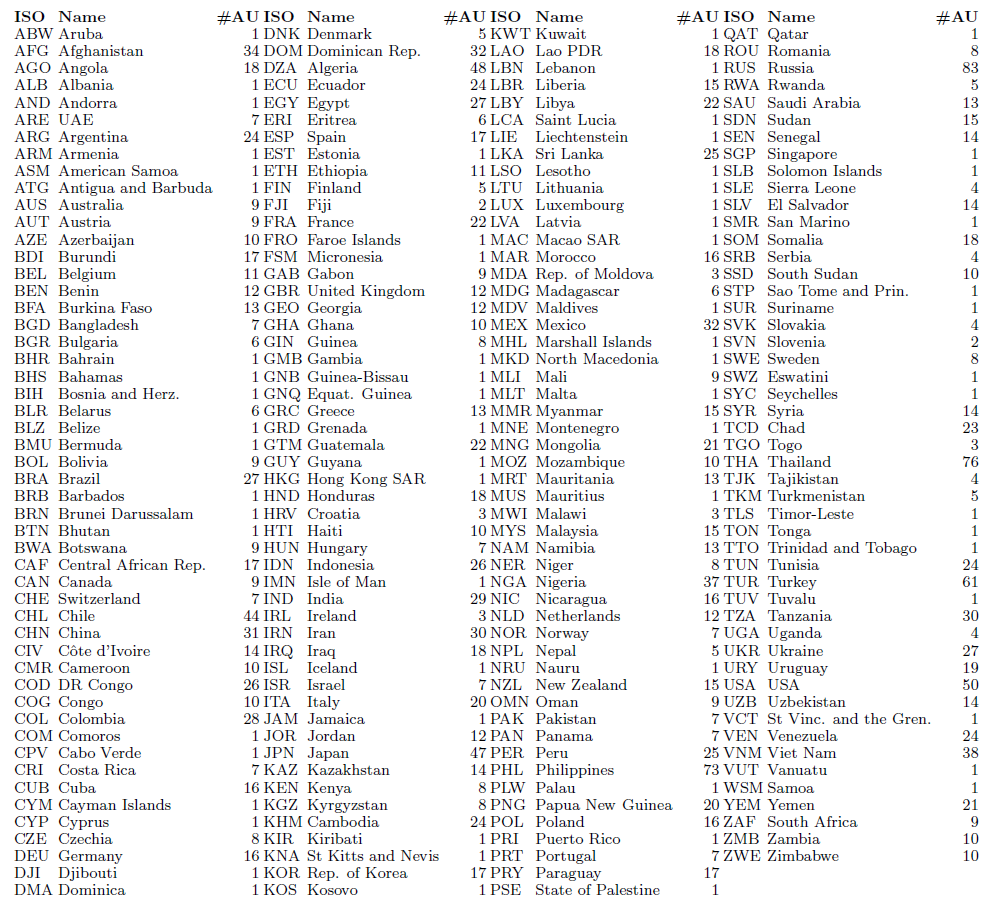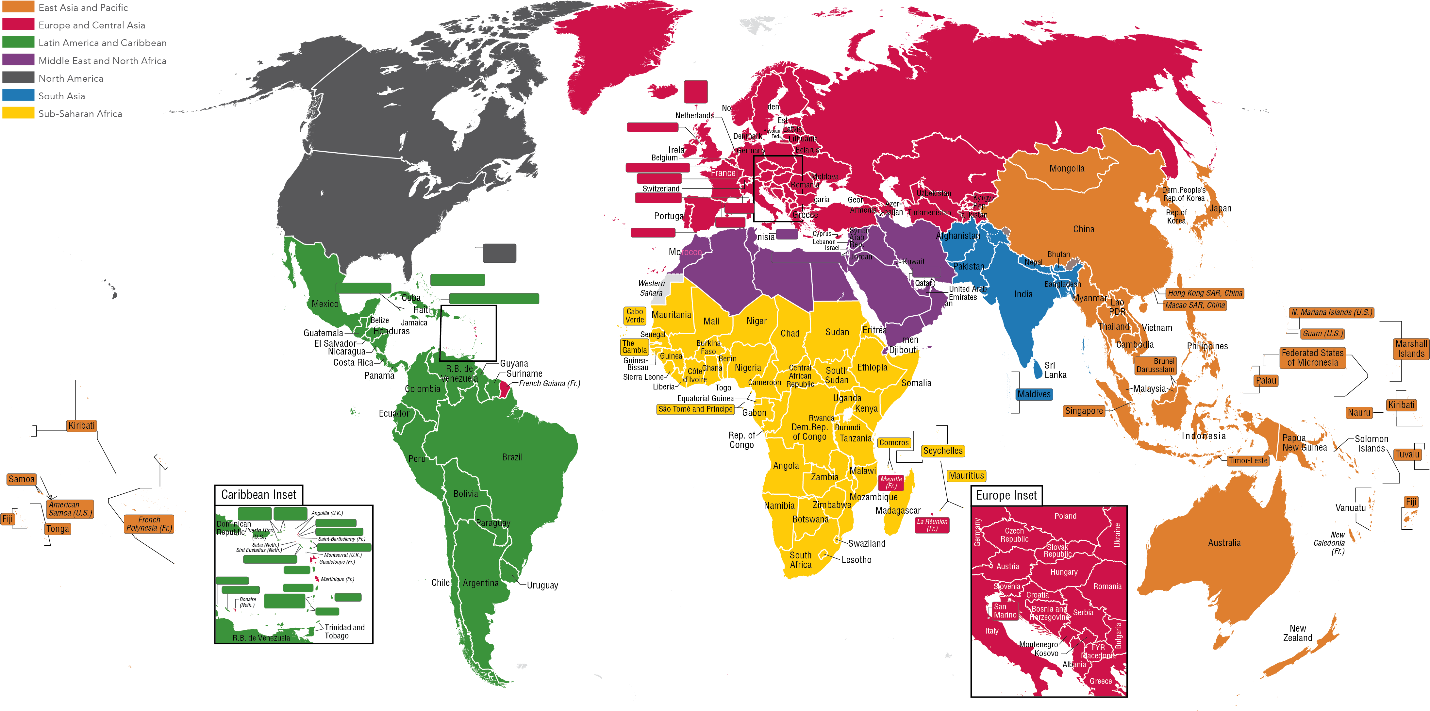The project is currently in the pilot phase, so some options may not be available. Share your feedback to help us improve.
Climate Change: Migration Economics
CliC:ME
Exploring geographical divisions
Content
Overview
Explore the dashboard
Overview
The model of the world economy is built on three layers of geographical division.
1. The world is divided into 202 countries.
2. Countries are divided into 2,311 administrative (level one) units.
3. Administrative units are divided into pixels.
Country and administrative unit maps are compiled from GADM.org.

Country and administrative unit maps are compiled from GADM.org.
Below, we summarize the number of administrative units for each country.

Country and administrative unit maps are compiled from GADM.org.
Countries are aggregated into continents according to the Atlas of Sustainable Development Goals, published by the World Bank:

Country and administrative unit maps are compiled from GADM.org.
Pixels are areas equivalent to 2.5 arc minutes squared, which corresponds to approximately 5x5 km squares on the Equator. Pixels constitute the main building blocks of the world economy model, and are defined by initial allocation of all types of individuals, production technology, climate conditions and future climate shocks. Each pixel hosts one production sector (agriculture, industry or services), and offers specific wage rates for all workers at four education levels. Thanks to this detailed resolution, it is possible to precisely describe the spatial distribution of human settlement, economic activity and climate heterogeneity that (co-interacting) fundamentally affect the future patterns of migration at all geographical scales.
Learn more
More topics from our Knowledge Base for further reading
Understanding the Spatial General Equilibrium Model
Gain comprehensive insights into the complex spatial general equilibrium model used to project significant climate change impacts on migration and the global economy.
How to navigate the Climate Migration Dashboard
Learn how to effectively use the Climate Migration Dashboard, including tips on accessing data, using visualization tools and customizing reports for your needs.
Our partners




Contact LISER
Luxembourg Institute of Socio-Economic
Research (LISER)
Maison des Sciences Humaines
11, Porte des Sciences
L-4366 Esch-sur-Alzette / Belval
E-mail: clicme@liser.lu
Tél.: (+352) 58 58 55 – 1
Technical problems?
The results published on this website by LISER have been generated using information, techniques, data, databases, algorithms, methodology, models, results, design, technology, material, inventions and/or software and any intellectual property rights (LISER’s background) as well as publicly available data, facts and information as detailed in our Knowledge Base. For the avoidance of doubt, LISER remains the sole owner of all LISER’s material, work, results and background.
The results of the project published by LISER on this website for dissemination of the knowledge, research and/or teaching purposes, may be accessed and used freely on an ‘AS IS’ basis, without any representation or warranty of any kind by LISER, either express or implied, including but not limited to any warranty or conditions of merchantability or fitness for any particular purpose.